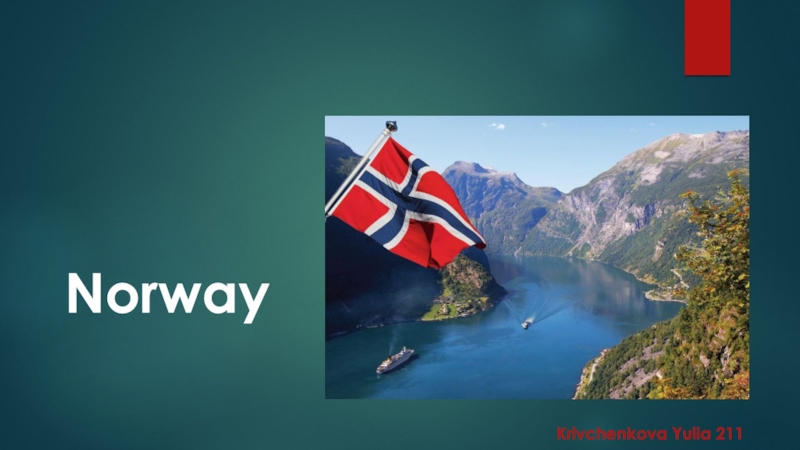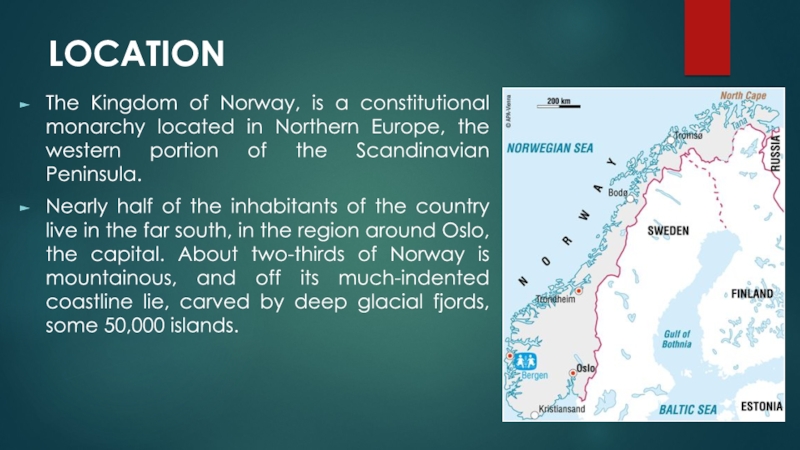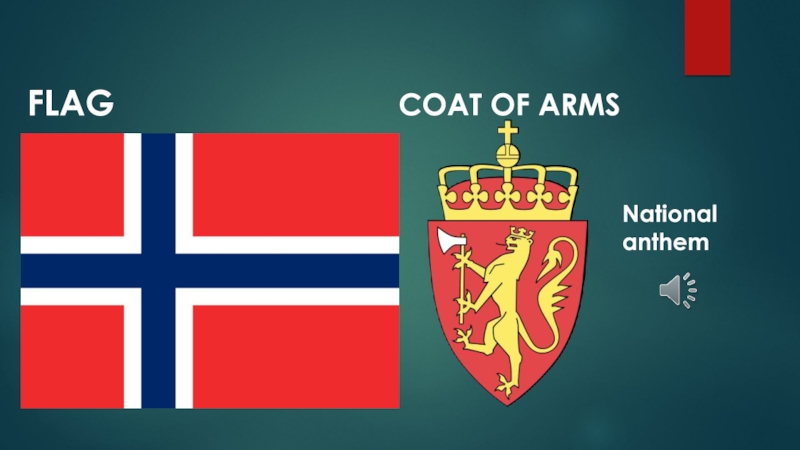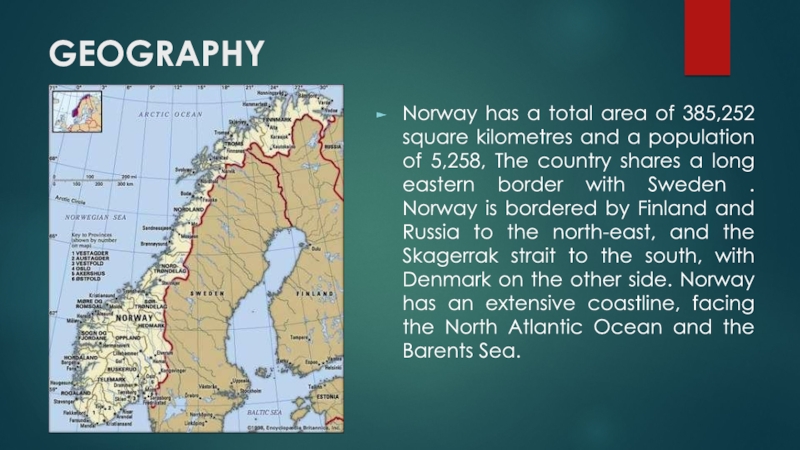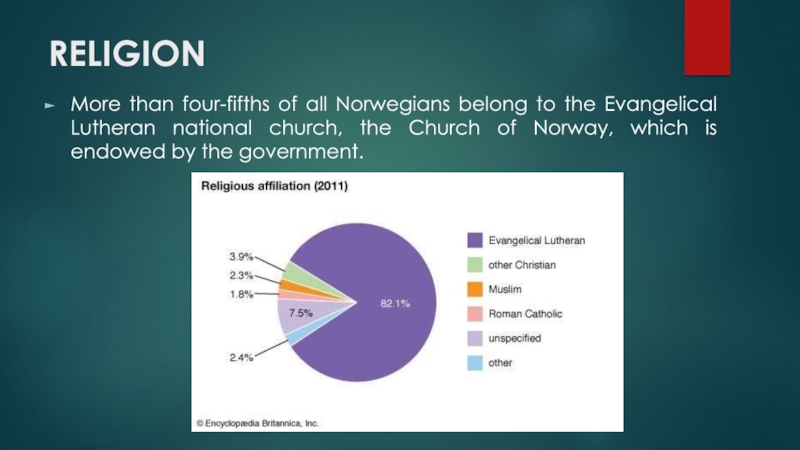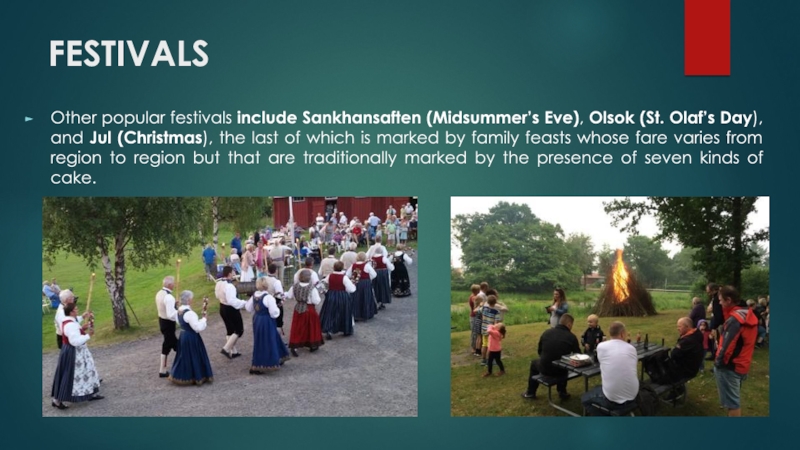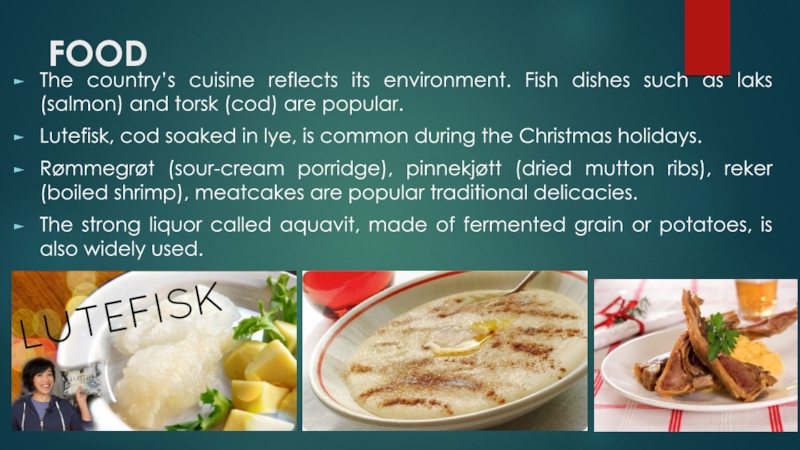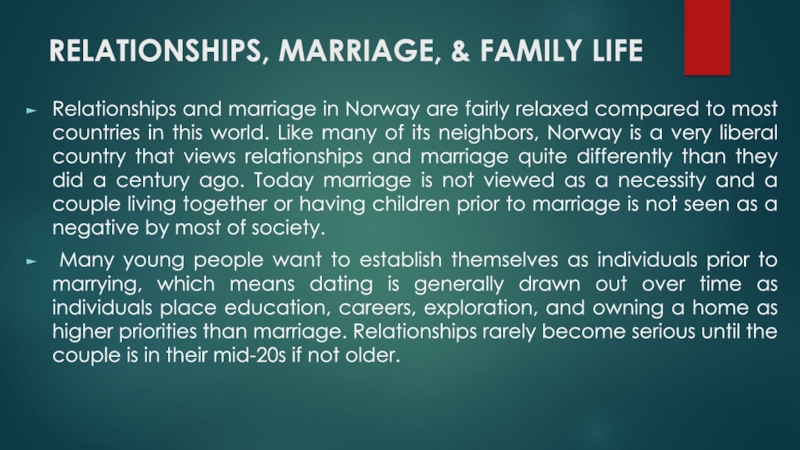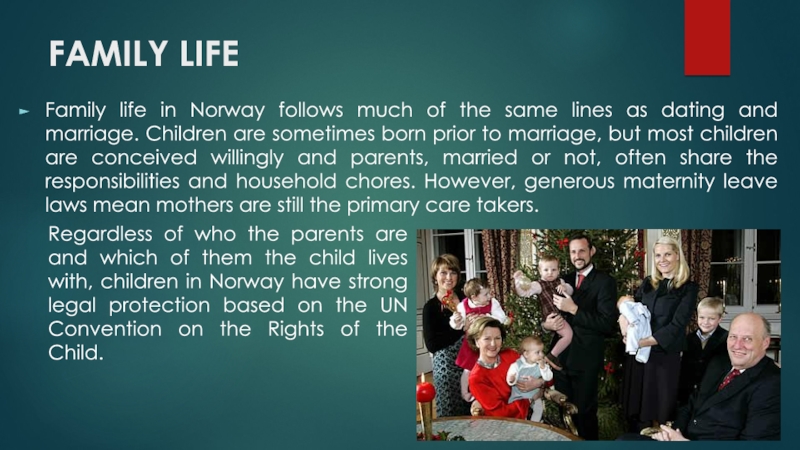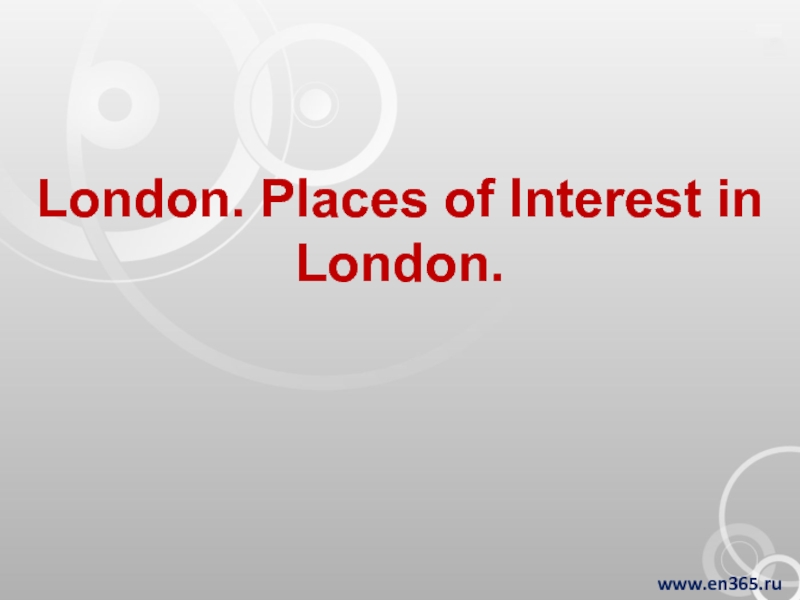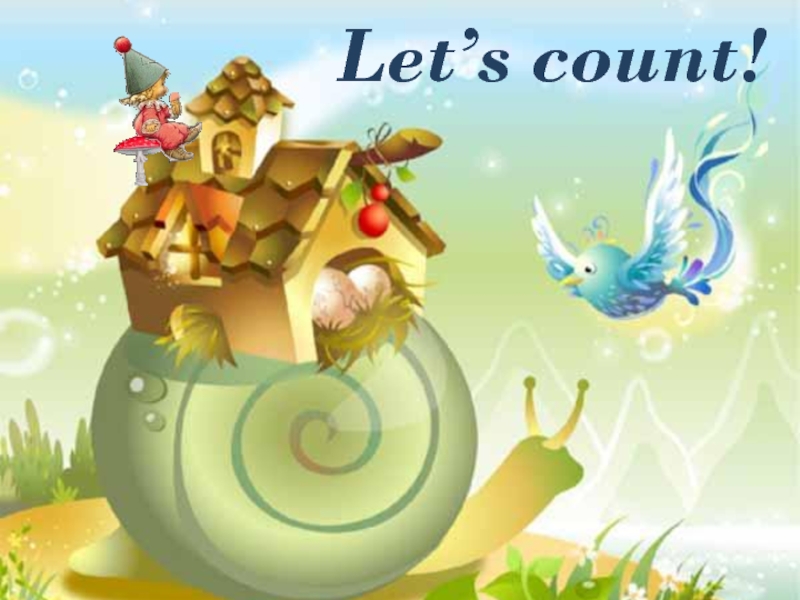- Главная
- Разное
- Дизайн
- Бизнес и предпринимательство
- Аналитика
- Образование
- Развлечения
- Красота и здоровье
- Финансы
- Государство
- Путешествия
- Спорт
- Недвижимость
- Армия
- Графика
- Культурология
- Еда и кулинария
- Лингвистика
- Английский язык
- Астрономия
- Алгебра
- Биология
- География
- Детские презентации
- Информатика
- История
- Литература
- Маркетинг
- Математика
- Медицина
- Менеджмент
- Музыка
- МХК
- Немецкий язык
- ОБЖ
- Обществознание
- Окружающий мир
- Педагогика
- Русский язык
- Технология
- Физика
- Философия
- Химия
- Шаблоны, картинки для презентаций
- Экология
- Экономика
- Юриспруденция
The Kingdom of Norway презентация
Содержание
- 1. The Kingdom of Norway
- 2. LOCATION The Kingdom of Norway, is a
- 3. Norway is a country of natural
- 4. FLAG COAT OF ARMS National anthem
- 5. GEOGRAPHY Norway has a total area of
- 6. THE KING King Harald V of the
- 7. Norway has had the highest Human
- 8. ETHNIC GROUPS
- 9. RELIGION More than four-fifths of all Norwegians
- 10. CULTURAL LIFE Located on the outskirts of
- 11. CONSTITUTION DAY On festive occasions folk costumes
- 12. FESTIVALS Other popular festivals include Sankhansaften (Midsummer’s
- 13. FOOD The country’s cuisine reflects its environment.
- 14. SPORTS AND RECREATION Norwegians have the special
- 15. RELATIONSHIPS, MARRIAGE, & FAMILY LIFE Relationships
- 16. FAMILY LIFE Family life in Norway follows
- 17. FJORDS
- 18. THANKS FOR YOUR ATTENTION!
Слайд 2LOCATION
The Kingdom of Norway, is a constitutional monarchy located in Northern
Europe, the western portion of the Scandinavian Peninsula.
Nearly half of the inhabitants of the country live in the far south, in the region around Oslo, the capital. About two-thirds of Norway is mountainous, and off its much-indented coastline lie, carved by deep glacial fjords, some 50,000 islands.
Nearly half of the inhabitants of the country live in the far south, in the region around Oslo, the capital. About two-thirds of Norway is mountainous, and off its much-indented coastline lie, carved by deep glacial fjords, some 50,000 islands.
Слайд 3
Norway is a country of natural beauty, with some of the
most spectacular and unique qualities offered by nature, such as the Fjords & the coast, the mountains & the glaciers, spectacular waterfalls, the Northern Lights & the Midnight Sun.
Слайд 5GEOGRAPHY
Norway has a total area of 385,252 square kilometres and a
population of 5,258, The country shares a long eastern border with Sweden . Norway is bordered by Finland and Russia to the north-east, and the Skagerrak strait to the south, with Denmark on the other side. Norway has an extensive coastline, facing the North Atlantic Ocean and the Barents Sea.
Слайд 7
Norway has had the highest Human Development Index ranking in the
world since 2009, a position also held previously between 2001 and 2006.
Norway ranks first on the World Happiness Report, the OECD Better Life Index, the Index of Public Integrity, and the Democracy Index.
Norway also has one of the lowest crime rates in the world.
Norway ranks first on the World Happiness Report, the OECD Better Life Index, the Index of Public Integrity, and the Democracy Index.
Norway also has one of the lowest crime rates in the world.
Слайд 9RELIGION
More than four-fifths of all Norwegians belong to the Evangelical Lutheran
national church, the Church of Norway, which is endowed by the government.
Слайд 10CULTURAL LIFE
Located on the outskirts of Europe and with much of
its inland population almost completely isolated until the 20th century, Norway has been able to preserve much of its old folk culture, including a large body of legends concerning haugfolket (pixies), underjordiske (subterraneans), and vetter (supernatural beings).
Слайд 11CONSTITUTION DAY
On festive occasions folk costumes are worn and folk singing
is performed—especially on Grunnlovsdagen (Constitution Day), commonly called Syttende Mai (May 17), the date of its celebration.
Слайд 12FESTIVALS
Other popular festivals include Sankhansaften (Midsummer’s Eve), Olsok (St. Olaf’s Day),
and Jul (Christmas), the last of which is marked by family feasts whose fare varies from region to region but that are traditionally marked by the presence of seven kinds of cake.
Слайд 13FOOD
The country’s cuisine reflects its environment. Fish dishes such as laks
(salmon) and torsk (cod) are popular.
Lutefisk, cod soaked in lye, is common during the Christmas holidays.
Rømmegrøt (sour-cream porridge), pinnekjøtt (dried mutton ribs), reker (boiled shrimp), meatcakes are popular traditional delicacies.
The strong liquor called aquavit, made of fermented grain or potatoes, is also widely used.
Lutefisk, cod soaked in lye, is common during the Christmas holidays.
Rømmegrøt (sour-cream porridge), pinnekjøtt (dried mutton ribs), reker (boiled shrimp), meatcakes are popular traditional delicacies.
The strong liquor called aquavit, made of fermented grain or potatoes, is also widely used.
Слайд 14SPORTS AND RECREATION
Norwegians have the special advantages of abundant space and
traditionally close contact with nature. Cross-country skiing and all forms of skating are national pastimes in the long winter season.
Norwegians have won more medals at the Winter Games than athletes from any other country. Norwegian sporting prowess is not, however, limited to winter competition. Norway also has an excellent record in track and field, notably in long-distance running events.
But above all, skiing is central to the country’s identity. Norway introduced ski competitions in the 18th century for its soldiers, and the first nonmilitary ski event occurred in 1843 at Tromsø. The annual Holmenkollen Ski Festival is the world’s oldest (1892), attracting tens of thousands of people.
Norwegians have won more medals at the Winter Games than athletes from any other country. Norwegian sporting prowess is not, however, limited to winter competition. Norway also has an excellent record in track and field, notably in long-distance running events.
But above all, skiing is central to the country’s identity. Norway introduced ski competitions in the 18th century for its soldiers, and the first nonmilitary ski event occurred in 1843 at Tromsø. The annual Holmenkollen Ski Festival is the world’s oldest (1892), attracting tens of thousands of people.
Слайд 15RELATIONSHIPS, MARRIAGE, & FAMILY LIFE
Relationships and marriage in Norway are
fairly relaxed compared to most countries in this world. Like many of its neighbors, Norway is a very liberal country that views relationships and marriage quite differently than they did a century ago. Today marriage is not viewed as a necessity and a couple living together or having children prior to marriage is not seen as a negative by most of society.
Many young people want to establish themselves as individuals prior to marrying, which means dating is generally drawn out over time as individuals place education, careers, exploration, and owning a home as higher priorities than marriage. Relationships rarely become serious until the couple is in their mid-20s if not older.
Many young people want to establish themselves as individuals prior to marrying, which means dating is generally drawn out over time as individuals place education, careers, exploration, and owning a home as higher priorities than marriage. Relationships rarely become serious until the couple is in their mid-20s if not older.
Слайд 16FAMILY LIFE
Family life in Norway follows much of the same lines
as dating and marriage. Children are sometimes born prior to marriage, but most children are conceived willingly and parents, married or not, often share the responsibilities and household chores. However, generous maternity leave laws mean mothers are still the primary care takers.
Regardless of who the parents are and which of them the child lives with, children in Norway have strong legal protection based on the UN Convention on the Rights of the Child.
